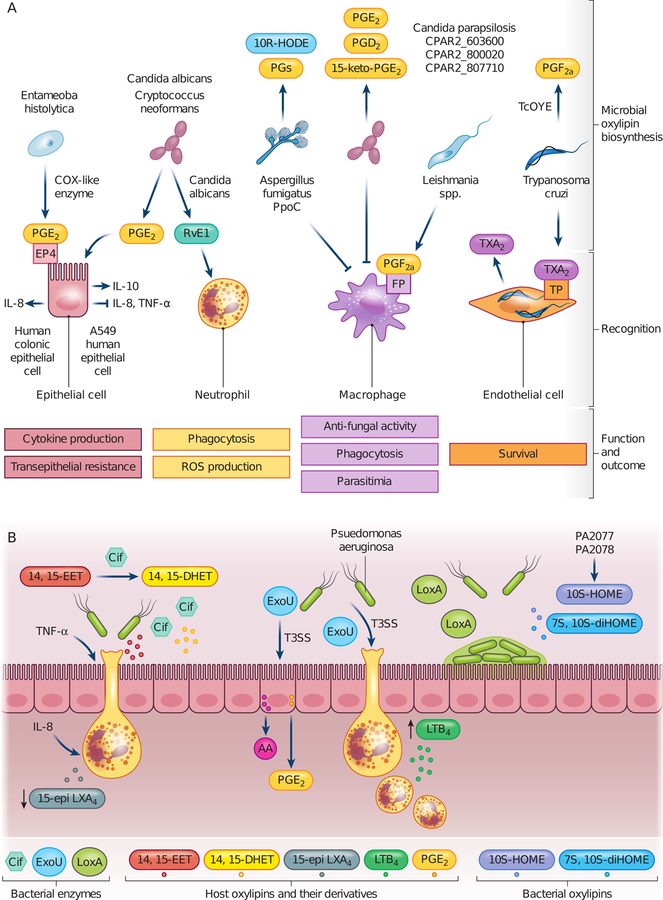FIGURE 2.
Host-pathogen interactions mediated by microbial oxylipins and enzymes. (a) Eukaryotic microbial pathogens, predominantly pathogenic fungi and protozoan parasites, produce the same oxylipins as the host eicosanoids and those unique to microbes. Host cells in close contact with pathogens through either infection (endothelial cell and macrophage) or immune response (macrophage, neutrophil, epithelial cell) can recognize microbe-derived oxylipins and respond with altered functionality. (b) Bacterial pathogens, such as Pseudomonas aeruginosa, produce enzymes that influence the type and abundance of host-derived oxylipins, leading to skewed inflammatory state. These include the epoxide hydrolase Cif and the phospholipase A2 ExoU. LoxA in P. aeruginosa also promotes biofilm formation on epithelial surface. IL-8, interleukin 8; IL-10, interleukin 10; TNF-α, tumor necrosis factor alpha; PGs, prostaglandins; PGE2, prostaglandin E2; PGD2, prostaglandin D2; PGF2α, prostaglandin F2α; 15-keto-PGE2, 15-keto-prostaglandin E2; RVE1, resolvin E1; 10R-HODE, 10R-hydroxyoctadecadienoic acid; TXA2, thromboxane A2; EP4, PGE receptor; FP, PGF receptor; TP, thromboxane receptor; TcOYE, Trypanosoma cruzi Old Yellow Enzyme; PpoC, Psi-producing oxygenase C; 14,15-EET, 14,15-epoxyeicosatrienoic acid; 14,15-DHET, 14,15-dihydroxyeicosatrienoic acid; 15-epi-LXA4, 15-epi-lipoxin A4; AA, arachidonic acid; LTB4, leukotriene B4; T3SS, Type III Secretion System; Cif, conductance regulator inhibitory factor

